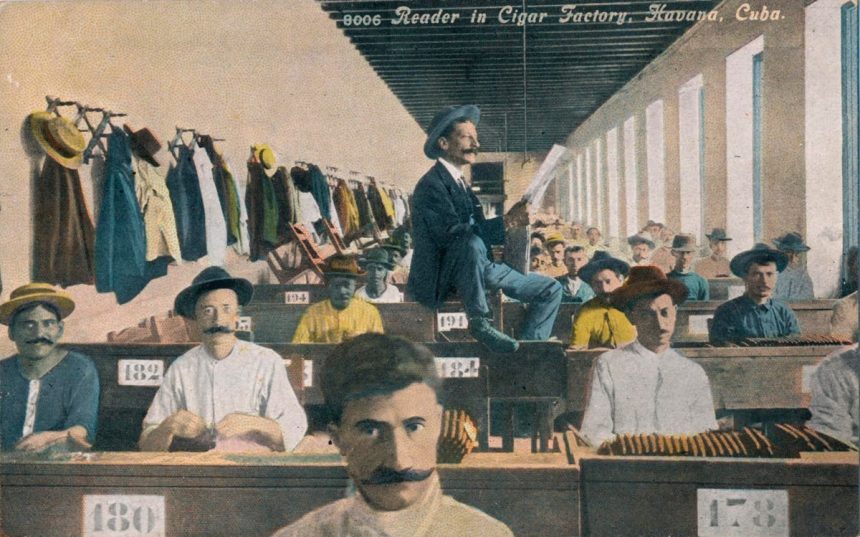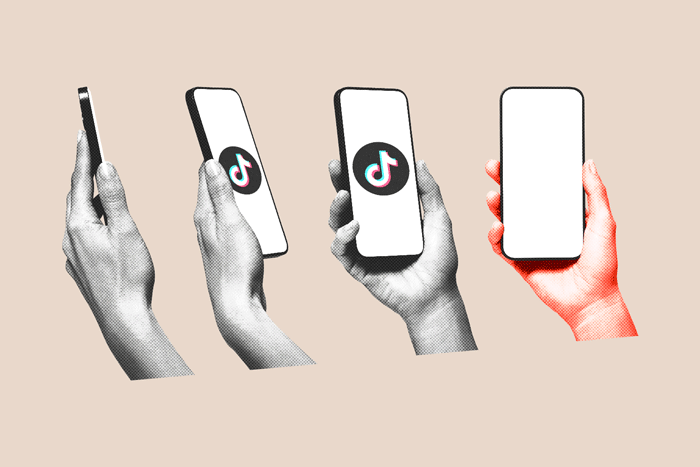If you go to a Cuban cigar factory today, you will see an unusual sight. While workers roll cigars, they listen to stories (from current affairs to classic literature) read aloud by a fellow worker. The names of the most famous Cuban cigars are said to reflect this practice: Montecristos and Romeo e Julietas. In 1866, Cuban newspaper La Aurora described this tradition: “During the hours most suited to manual labor, imaginations are busily questioning scientific and philosophical truths. They are talking and discussing … to learn and continue along the path of civilization.”
We are civilized because of stories. They are the lifeblood of human history, the currency of learning, faith, culture and civilization. We think, act and interpret our lives through the stories we hear and tell ourselves. Stories guide the decisions we make (even economic ones). Research tells us that fictional stories transport us: pulling us in so profoundly that we literally step into the shoes of a character, feeling their anger, happiness and pain. As technologists seek to improve AI, they’ve discovered that the essence of human intelligence is based in our capacity for story – a tough thing to teach a machine.
But, at the moment, we’re wasting storytelling as a tool in the marketing toolbox. A tactic to persuade people to believe things or buy them. It certainly works, but relegating story to a sales weapon ignores their vast potential to help us make sense of the world and vast changes sweeping our workplaces. We should be using storytelling to rebuild work from the rubble of the past few years. Recognizing their power to forge common bonds, shape shared meaning, unite and inspire your people. Here are three ways that story sharing improves your culture, develops skills and aligns people in new ways of working.
The stories your employees share shape your culture
For centuries, human beings all over the world have used storytelling to transmit cultural values and traditions. Organizations are no different. Companies tell a brand story and proclaim their cultures through their mission, vision, and principles. But it’s their people who share the stories that bring that culture to life. Bosch, the German tool and technology company founded in the 1890s by the pacifist inventor, Robert Bosch, describes itself as a company grounded in trust and respect that makes innovative products “invented for life.” Bosch himself permeates the company ethos, long after his death. As one story goes, an unfortunate worker dropped a paperclip on the floor as he passed the founder in a company hallway. “You dropped something,” Bosch allegedly said to the young man, who replied, “oh, it’s just a paperclip.” The founder quipped, “that’s not a paperclip, it’s my company’s wealth.” This viral story, still shared among employees, amplifies the company’s relentless focus on stewardship and frugality.
The stickiness of your culture lies in the stories your employees tell each other. Research shows that people, including newcomers, believe the stories of their peers more than the stories of their leaders. These stories signal the tacit knowledge people need to navigate effectively within a company: can I stand up to my boss? Is my perspective valued? Despite the passion of a committed leader, your desired culture can’t survive if it isn’t broadly adopted and internalized. Culture is routinely seen as a leader’s game. But if it doesn’t resonate and reverberate among the stories of the rank and file, it doesn’t really exist.
Shared stories drive collective learning and build skills
Science tells us that stories don’t just transmit a cultural message, they serve as the vehicle for collective sensemaking, the process people use to give meaning to their experiences. Groups use the “war stories” of their peers to adapt to the norms, patterns and practices of organizations, and to learn to manage unexpected events. This practice isn’t limited to social etiquette and interpersonal behavior. A famous ethnographic study of photocopier repair technicians identified shared stories as a potent source of distributed technical knowledge.
Their stories unfolded socially – as banter after a hard day’s work or impromptu advice over a cup of coffee. But the content was detailed and instructive. In a culture where technical skill was the currency of reputation and performance, they listened to the experts and honored seniority. Their war stories deepened their collective intelligence, extending the know-how of the most seasoned technicians and building the confidence of the most junior. Armed with these stories and the support networks they represented, the technicians tackled thorny problems not covered by their repair manuals. Regardless of our jobs, we are exponentially better when we work together. Shared stories power community, community makes us smart.
Stories align teams
We tend to think of team alignment as a cognitive trait: we are “on the same page” because we understand our common purpose. But the reality is more complex. Neuroscience tells us that when people experience a story, their brains process the emotions of the characters, literally putting them into the character’s shoes and strengthening their empathy. But research also reveals that when people experience the same story, their heartbeats synchronize. They do not have to interact with each other – or even experience the story at the same time – for this to happen.
In 1989, Marine Commandant General Alfred Gray seemed to have intuitively understood this phenomenon. He compiled the first annual Commandant’s Reading List to require marines at all levels to learn and grow by reading and discussing stories. The books range from military tactics to classic fiction – chosen to help them see themselves as part of a thinking and learning organization. In 2012, General James Amos confirmed the importance of this practice, reinstating the requirement that every marine read three books every year. He aspired for each marine to have “a 30 year old body and a 5,000 year old mind.” This list of venerated classic stories are woven into the definition of Marine Corps life. This, Amos added, is “what we do, and it tells all who we are.”
Salman Rushdie once wrote, “Those who do not have power over the story that dominates their lives, the power to retell it, rethink it, deconstruct it, joke about it, and change it as times change, truly are powerless because they cannot think new thoughts.” If we relegate story to a tool that simply sells and persuades, we lose the very essence of who we are and what we are capable of achieving.
We are human because we tell stories. Because we tell stories, we do great things together. This capacity is our superpower – one that sets us apart from all other species and from the machines we build. Whether your people are rolling cigars, fixing machines or inventing the future, the stories they share today will shape the workplaces—and civilization—of tomorrow.
Read the full article here










